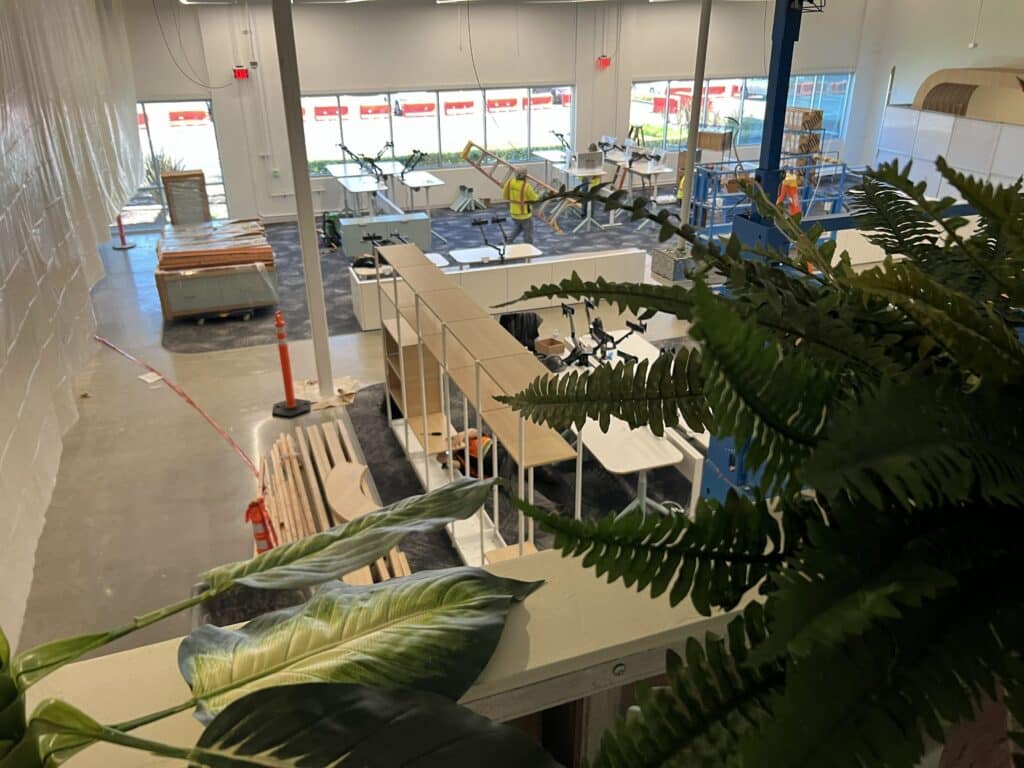More and more, houseplants are taking center stage in interior design schemes in recent years. Plants, rather than conventional artwork, are becoming popular as a means for individuals to incorporate more of nature into their homes. This trend is in line with biophilic design concepts, which stress the importance of being in nature for the purpose of improving health. However, are living things equivalent to works of art? The influence of living decor on home design is on the rise, so let’s have a look.
The Rise of Biophilic Design in Modern Interiors
By incorporating aspects of nature into interior spaces, biophilic design aims to create a harmonious blend of home and nature. More and more people are looking to houseplants to liven up their increasingly cramped city lives. Research shows that adding plants to a space boosts mood, makes the air healthier to breathe, and makes it more visually appealing. Homeowners and interior designers alike have embraced the trend of including plants in modern interior styling.
Plants as Living Art Pieces
Plants, in contrast to still art, provide a living, breathing dimension to interior design. They develop and adapt to their environment over time. Monstera deliciosa and calatheas are two examples of plants with extraordinary leaf forms and eye-catching patterns that deserve special recognition as botanical masterpieces. On the other hand, low-maintenance succulents and air plants provide a minimalist appeal.
Green Walls and Vertical Gardens
The use of green walls, sometimes known as living walls, is on the rise in both residential and commercial architecture. The vertically placed plants in these artworks give them a rich, textured look that is sure to turn heads. Green walls are not only aesthetically pleasing, but they also serve practical purposes such as improving indoor air quality, lowering noise levels, and acting as natural insulation.
Statement Planters and Plant Displays
Plants, when strategically placed, can turn any room into a beautiful centerpiece. Attractive accents may be provided by large potted plants, including bird of paradise plants or fiddle leaf figs. There are many ways to add a personal touch to creative plant arrangements, such terrariums or hanging planters. With plant-based design, homeowners may create one-of-a-kind compositions that showcase their style by experimenting with various species, colors, and textures.
Comparing Plants and Traditional Art in Home Decor
Plants and traditional art both have an aesthetic value, yet they have distinct functions. The beauty of paintings and sculptures will never fade, but the life and energy of plants will always be more striking. Plants are more fascinating than static art because they demand care and involvement. Plants need regular attention, such as watering, trimming, and the right kind of light, in contrast to paintings, which simply require dusting every so often.
One further thing to think about is adaptability. Plants, in contrast to artwork, may be chosen without regard to a predetermined color scheme or theme. Greenery complements every kind of design, whether it’s contemporary, rustic, or boho, and adds visual interest without competing with it.
Benefits of Incorporating Plants into Interior Spaces
Plants not only look nice, but they also have practical uses that conventional furnishings just can’t compete with. Among the many benefits are:
- Improved Air Quality: Reducing air pollutants and improving environmental health, plants filter toxins from the air.
- Stress Reduction: Research has shown that being in an environment with plants might help people relax and feel less stressed.
- Enhanced Productivity: Having plants in your office might help you concentrate and think more creatively.
- Temperature Regulation: Adding plants to your home may help control the humidity and make it more pleasant to be inside.
- Natural Sound Absorption: In houses or businesses with a lot of people, having plants around may help lower the level of background noise.
Challenges and Considerations
There are advantages to decorating with plants, but there are also some challenges. For example, the state of the light is very important to the plant’s vitality. While some plants do well in dim light, others need full, indirect sunshine. Large plants or substantial green wall installations may also be limited by space restrictions.
Also, different species have different maintenance needs. Orchids and ferns are more demanding, so novice gardeners should start with low-care species like pothos and snake plants. Some plants are poisonous to animals, so pet owners should exercise caution as well. To successfully incorporate vegetation into plant-based design, it is helpful to understand these elements.
Beyond Canvas and Frames: The Rise of Living, Breathing Decor
Plants are being seen as more than just decorative accents in plant-based design, which is driving up demand for the trend. Although they can’t fully replace more conventional forms of artistic expression, they can provide a novel, participatory, and health-promoting option. Through the incorporation of vegetation, homeowners have the ability to create environments that captivate the senses and uplift the spirit. Living décor is revolutionizing contemporary home design, showcasing the beauty of nature via anything from a single statement plant to an entire green wall.
The Wright Gardner offers breathtaking plant-based decor to elevate your area! Adding verdant foliage, colorful green walls, and personalized plant installations is our specialty as a skilled team. Embrace the beauty of nature to elevate your home style. If you want to infuse your house or business with style and vitality, contact us immediately!

